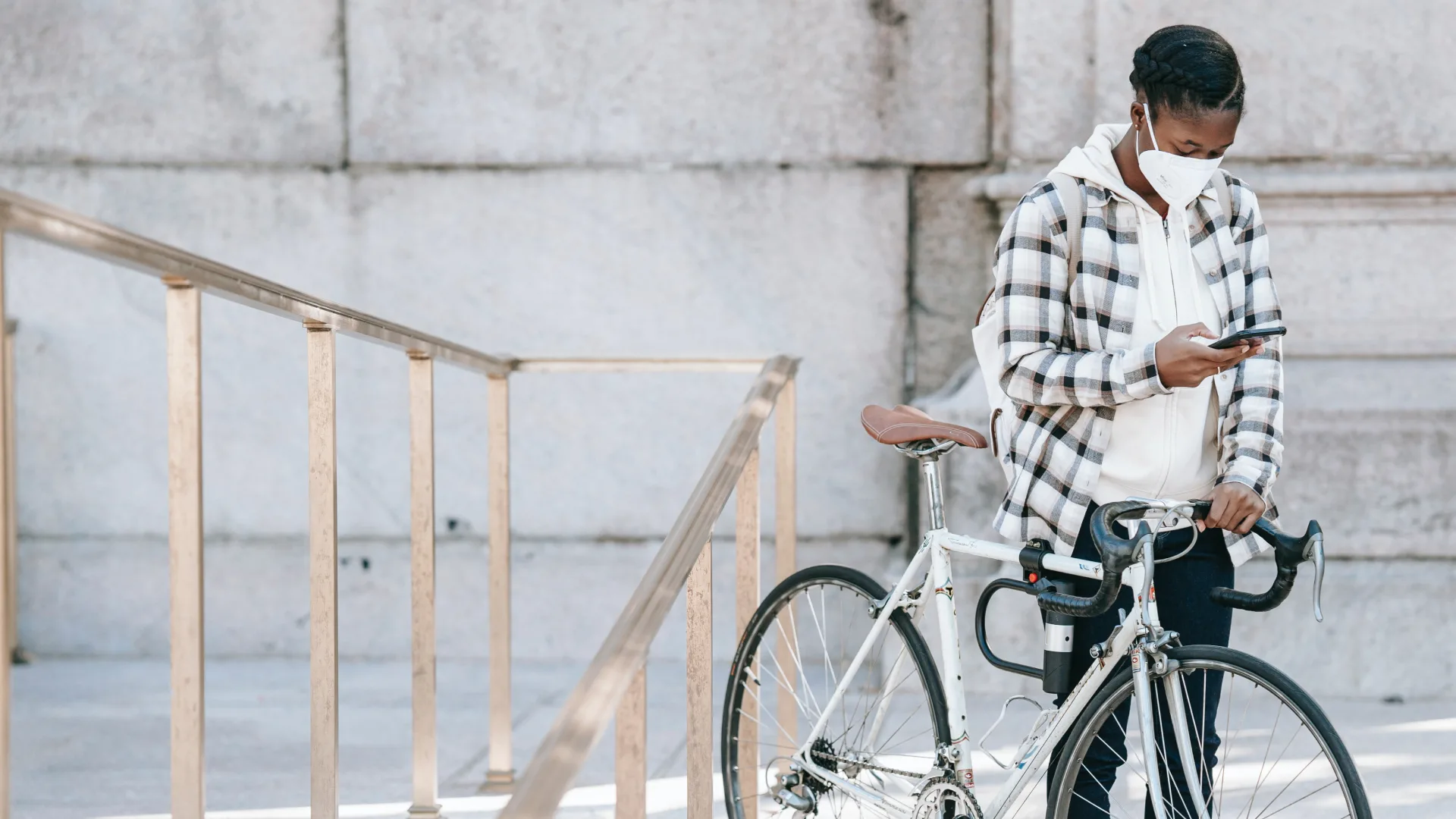We’ve been getting a lot of questions from clients — and, let’s face it, friends and family, too — about the new COVIDaware MN app recently released by the state of Minnesota. So we pulled together Clockwork leaders in tech, design, and change enablement to get some answers to these questions:
- Is it safe?
- How do I help others use this app?
- Why aren’t more people using the app?
- So, should you use it?
Note that these are our opinions; we don’t work for the State and didn’t build the app. That said, one of us sits on the Governor’s Blue Ribbon Council on Information Technology and had a sneak peek at the app before it came out.
Is it safe?
Vince Cabansag, Director of Technology:
This, and its variations, is by far the most common question we’ve heard. And the short answer is yes.
COVIDaware MN was built on a framework designed to protect user privacy. The app does not track your location and it does not access personal information on your device. Here are some other things you should know about it:
- It’s exposure notification technology, not contact tracing. The app tells you if you’ve been near someone who later tests positive for COVID-19. Contact tracing apps, on the other hand, let people log their location and share it with public health authorities. While some states have deployed contact tracing apps, Minnesota chose an approach of deploying an exposure notification system.
- Your user privacy is likely better protected with COVIDaware MN than most apps currently installed on your device.
Your user privacy is likely better protected with COVIDaware MN than most apps currently installed on your device.
- The more people who use it, the better it works. A recent research study by Oxford shows that adoption of an exposure notification system can significantly suppress exposures to COVID-19.
- The app was developed by the Pathcheck Foundation, a 501(c)(3) nonprofit and a mission-driven organization, originally founded at MIT. They partnered with epidemiologists at Mayo Clinic to develop the business rules for the exposure notification system.
- The app is opt-in. By default, your phone is not automatically enrolled. Users must download COVIDaware MN to receive the benefit of getting notified in the event of an exposure.
- How exposure notification works: When someone tests positive and they have the app installed on their phone, they can choose to anonymously warn others. Anyone who might have been in the proximity of the person within the infection period will receive a notification. If you receive one, you won’t know who triggered it, where it would have occurred, or the specific time of exposure. But you will know you’ll want to go get tested.
- The app is built on an exposure notification system framework created by Apple and Google. They have landing pages (below) that explain the exposure notification system framework in plain terms. I’d recommend visiting these pages to learn about how the technology works.
- (Apple) Privacy-Preserving Contact Tracing and
- (Android) Exposure Notifications: Using technology to help public health authorities fight COVID‑19,
The concern for user privacy is valid given the track record of big tech. A little education on the app and framework goes a long way to understanding the risk level to your privacy and the benefits to you and your community. The efficacy of an exposure notification system becomes greater when used with other measures like testing, masking, physical distancing, and quarantining. I use the app and I believe it’s in the best interest of everyone to adopt these measures to keep one another safe.
Some of my loved ones are not so tech-savvy, how do I help them use this app?
Micah Spieler, Director of Experience Design:
This is one thing that the COVIDaware MN app really nails — it’s super simple to use. The install and setup is easy thanks to a smooth onboarding process and clear decisions that let you know with green checkmarks that “exposure detection is on.” It really couldn’t be more straightforward — and that’s what we call good design.
Once it’s going, exposure detection happens automatically and in the background. It checks at least once a day to see if you’ve been near any other people who have the app installed on their phone and who have been exposed. It then alerts you if there is a potential exposure. Everything is anonymous and they’re taking privacy very seriously.
If someone gets tested and their results come back positive, using the app to report test results is quick. All one has to do is enter in a verification code that they’ll receive from a contract tracer (or by calling in, more on that in a second), and the app will automatically (and again, anonymously) alert anyone who may have been in contact with them while they were contagious. That’s it, they won’t have to do anything else (other than quarantining and taking care of their health, of course).
Outside of the app experience, one area the State has been trying to improve is how quickly you receive the verification code after getting a positive test result. In order to reduce false positives, the codes come from contract tracers — not your test results. This means that when the tracers are overwhelmed, there’s a delay in getting the code you need to report your results via the app. There is a phone number you can call to work around the contact tracer backlog, but there are opportunities here for some efficiencies and integrations.
It was smart of state officials to ship a “single function” app that does its job, and nothing more. This is a great product strategy for the app: it keeps users focused and minimizes the potential for a confusing experience.
This seems like a pretty simple way to help manage the spread. Why aren’t more people using the app?
Kasey Ross, Transformation Strategist:
Adoption of any technology is going to pose some kind of a challenge. In a situation where disease-management has become politicized, and where users get their information from a vast range of sources, even simple tech faces a big adoption hurdle.
Ideally, to generate widespread adoption, Minnesota (or any of the 18 states/territories with this app) would take the following steps:
- Articulate a clear, compelling reason for using the app. Share a vision for a future made possible by widespread app usage.
- Create a list of the different kinds of people (personas) who should be using the app. These personas are based on behavior, as much as on geographical or occupational criteria.
- Create messages for each persona that speak to what they, specifically, gain from using the app. In other words, answer the question What’s in it for me?
- Generate a list of high-profile “influencers” who matter to each persona. In any change endeavor, the messenger is every bit as important as the message. Consider: Who are the best people to send the adoption messages (#1, #3) to the different persona groups?
With all this information in hand, the state and its marketing partner would set out to create a campaign that uses a range of communication methods and messengers to get the word out. I don’t know about you, but I first heard about the app when a friend forwarded me an invite. This is an excellent mechanism for most people. But it’s just one of many. People often need an additional message or two in order to take action.
In an ideal world, this campaign would have started before the app launched and continued for months. But efforts can still begin now and proceed for the next few months to drive up adoption rates. You can even start an adoption campaign of your own, using the state’s supporter resources.
So, should you use COVIDaware MN?
Ultimately, that’s up to you. We hope that we’ve answered your questions about how the app works and maintains your privacy and safety. Like most measures to slow the spread of COVID-19, this, too, works best when more people use it.
Need more info? The app’s website has an extensive FAQs page. The site also features a resources section to supply supporters with assets like fact sheets, social media content, and graphics/images of the app (that’s where we got the images used in this article!). And of course, if you’re ready to download the app, you can do that on their site, too.
Want our experts to help solve your business problems with smart solutions? Get in touch.




